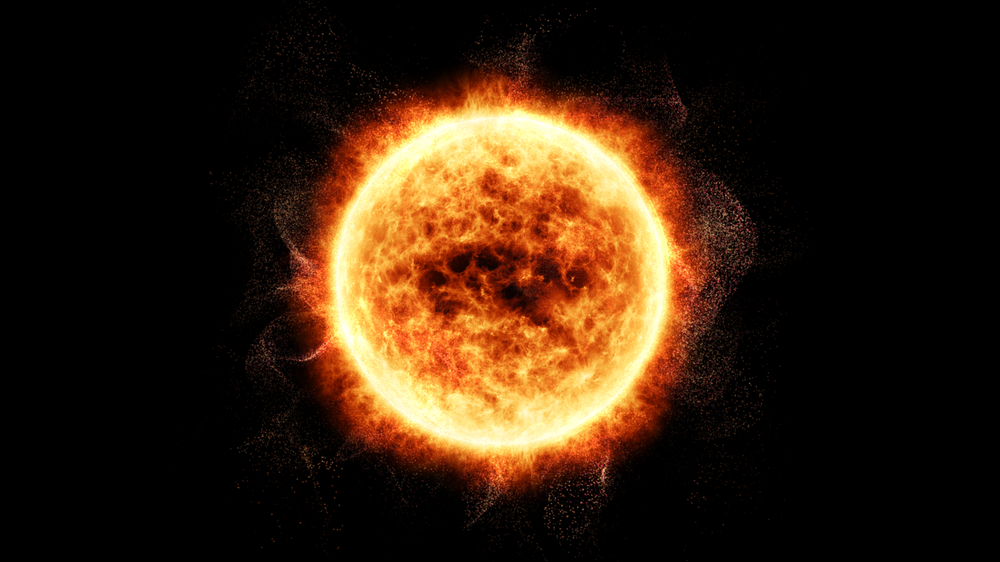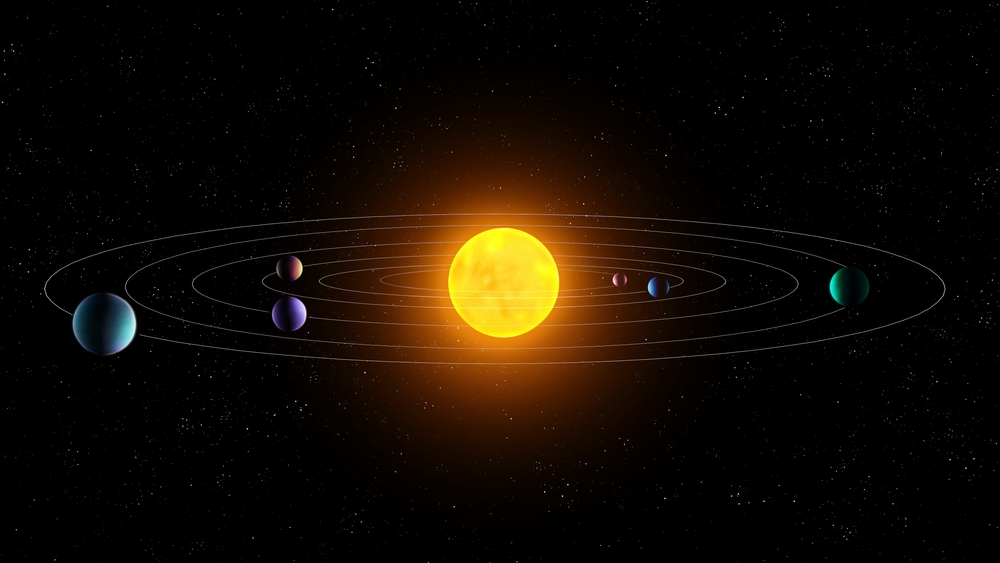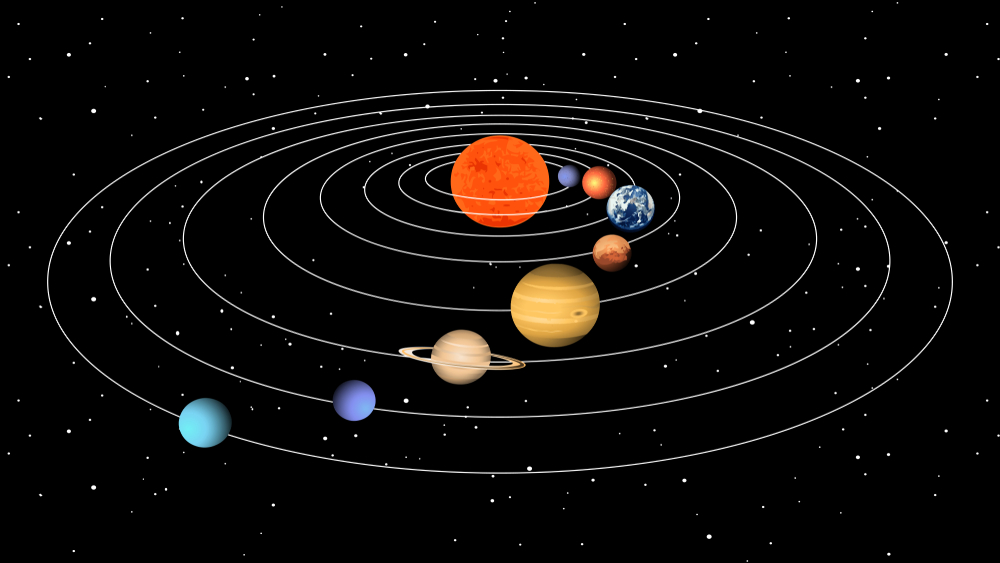
Imagine looking up at the sun tomorrow morning and knowing something completely different about that blazing ball of fire. Something that would change everything you thought you knew about consciousness, minds, and what it means to be aware.
Scientists have spent centuries trying to understand consciousness, and they’re still baffled by how gray matter in our skulls creates thoughts, feelings, and awareness. But what if they’ve been looking in the wrong place? What if the answer isn’t hidden in tiny neurons but written across the cosmos in letters of fire?
Some researchers now suggest that consciousness might not belong exclusively to biological brains. Instead, they propose something so radical it sounds like science fiction: stars themselves might be conscious beings, complete with their own form of awareness, decision-making, and perhaps even intentions.
What If Your Chair Has Feelings?
Before we can understand how the sun might think, we need to grasp a mind-bending philosophical concept that challenges everything we assume about consciousness. Called panpsychism, this theory suggests that some form of awareness or experience exists throughout nature, not just in animal brains.
Picture the chair you’re sitting on. According to panpsychists, those atoms making up your chair might possess some rudimentary form of experience. Not human-like consciousness, but something more basic. Your potted plant might have inner experiences. Even the walls around you could harbor some type of awareness.
Sound crazy? Ancient Greeks thought everything was “full of gods.” Plato described the world as “a living creature with soul and reason.” Many cultures throughout history have treated the sun, moon, and stars as conscious beings deserving respect and reverence.
Our mechanistic scientific worldview, which sees nature as unconscious machinery, is actually the historical exception rather than the rule.
Ancient Wisdom Meets Modern Science
Italian philosopher Francesco Patrizi coined the term “panpsychism” in the late 16th century, combining Greek words meaning “everything” and “soul.” But the idea stretches back much further, to philosophers who believed consciousness permeated all of nature.
During the 19th century, panpsychism gained respect among Western thinkers. Arthur Schopenhauer, the famous philosopher of pessimism, supported these ideas. William James, considered the father of modern psychology, also embraced panpsychist thinking.
But then came the 1920s and a philosophical movement called logical positivism, which emerged from Vienna. These thinkers declared that only empirically proven scientific knowledge counted as real knowledge. Everything else was dismissed as “metaphysical mumbo-jumbo.” Panpsychism was declared dead.
Until recently. Neuroscience advances and quantum physics discoveries have sparked renewed interest in these old ideas about consciousness being everywhere.
The Hard Problem That Broke Scientists’ Brains

Modern neuroscience faces what philosophers call the “hard problem of consciousness.” Scientists can map brain activity, identify neural pathways, and track electrical signals. But they still can’t explain why any of this creates subjective experience.
How does mere matter give rise to the feeling of seeing red, tasting chocolate, or feeling sad? Why should physical processes in our brains create inner experiences at all? Many scientists admit they have no clue.
In 2004, Italian neuroscientist Giulio Tononi proposed integrated information theory, suggesting consciousness exists wherever complex systems integrate information. His theory implies that consciousness might be far more widespread than we thought.
Leading neuroscientist Christof Koch took this further in 2014, arguing in Scientific American that if lumps of matter can form human bodies and become conscious, there’s no reason elementary particles couldn’t also harbor consciousness.
Everything Has a Mind vs. Nothing Has a Mind
Modern panpsychism splits into competing camps. One side argues that consciousness exists everywhere in nature, just in different forms and intensities. Human brains have complex consciousness because they integrate vast amounts of information. Simpler systems have simpler forms of awareness.
But philosopher Keith Frankish takes the opposite view. “Consciousness doesn’t exist, and we only think it does because we are under a sort of illusion about our own minds,” he argues. According to his “illusionist” theory, consciousness is just a trick our brains play on us.
Both sides try to solve the same puzzle: how can physical matter create subjective experience? Panpsychists say consciousness is built into matter itself. Illusionists say consciousness is fake, just a convincing biological illusion.
Meet the Biologist Who Says Stars Think

Enter Rupert Sheldrake, a Cambridge-trained biochemist who has spent decades exploring controversial ideas about consciousness and nature. In 2021, he published a paper in the Journal of Consciousness Studies asking a startling question: “Is the sun conscious?”
Sheldrake isn’t asking whether the sun has human-like awareness. Instead, he’s suggesting that our star might possess its own form of consciousness suited to its electromagnetic nature and cosmic environment.
“Consciousness does not need to be confined to brains,” Sheldrake explains. “The link between minds and physical systems seems to be through rhythmic electromagnetic fields, which of course are present in our brains. They are also present in and around the sun, and these could be the interface between the solar mind and the body of the sun.”
How the Sun Could Actually Have a Mind
Stars are incredibly complex electromagnetic systems. Our sun contains plasma, electrically charged matter where atomic nuclei and electrons separate and swirl around each other. As the sun rotates every 28 days, these movements create vast magnetic fields extending throughout the solar system.
Magnetic field lines become “frozen” into the plasma, creating a feedback loop where magnetic fields control plasma movement and plasma movement controls magnetic fields. Millions of cellular structures called granulations bubble up from below the sun’s surface, each one creating its own electromagnetic patterns.
Some consciousness researchers propose that electromagnetic fields in brains actually are conscious, not just correlated with consciousness. If they’re right, then the sun’s immense electromagnetic complexity could theoretically support some form of awareness.
According to integrated information theory, consciousness requires systems that can integrate information about their own states. Complex systems with many possible states and strong internal connections score higher on consciousness measures.
Solar Thoughts Move Slower Than Molasses

If the sun were conscious, its thoughts would operate on completely different timescales than ours. Electromagnetic signals travel at the speed of light, but even at that incredible velocity, crossing the sun’s 1.4 million kilometer diameter takes 4.6 seconds.
For solar awareness to sense changes at the edge of the solar system would take 16.7 hours. Galactic-scale thoughts might require thousands or millions of years. By human standards, solar consciousness would appear glacially slow.
Yet this pace might suit cosmic needs perfectly. Stars live for billions of years and influence planetary systems across vast distances. Perhaps stellar awareness operates on timescales that match stellar lifespans.
Stars as Neurons in a Galactic Brain
Taking this idea further, individual stars might function like neurons in a galactic brain. Our Milky Way contains over 100 billion stars connected through magnetic filaments and flowing plasma currents. At the galaxy’s center sits a supermassive black hole that emits huge amounts of energy and influences stellar behavior throughout the galactic arms.
If stars were conscious, they might participate in galaxy-scale information processing and decision-making. Galactic consciousness would operate on even more mind-boggling timescales, taking 50,000 years just to perceive what’s happening at the galaxy’s edge.
Magnetic filaments connect galaxy clusters across hundreds of millions of light-years, forming what astronomers call the cosmic web. Perhaps consciousness scales up through every level of cosmic organization, from stars to galaxies to the universe itself.
The Volitional Star Hypothesis Gets Weird

Physicist Greg Matloff has proposed the “volitional star hypothesis” as an alternative to mysterious dark matter. Instead of invisible matter holding galaxies together, Matloff suggests stars might steer themselves into proper galactic positions by firing electromagnetic jets in specific directions.
Like cells organizing themselves within a growing embryo, stars might use their own electromagnetic activity to navigate through galactic space. Evidence for this idea would include stars firing directional jets opposite to their galactic motion, especially at greater distances from galactic centers.
Even more bizarrely, philosopher Clément Vidal has proposed “stellivore” stars that hunt and consume other stars in binary systems, draining matter from their companions to fuel themselves. While mass transfer between binary stars is well-documented, Vidal suggests some might actively seek new victims when their current food source becomes exhausted.
Solar Complexity That Puts Brains to Shame
Popular science often claims human brains are the most complex structures in the universe. But our sun displays staggering electromagnetic complexity that dwarfs anything found in biology.
Solar plasma creates millions of granulations, each generating electromagnetic fields. These organize into larger super-granulations, which participate in global magnetic field patterns that reverse every 11 years. Acoustic vibrations reverberate through the entire solar body, creating resonant frequencies influenced by surface activity.
Sunspots emerge from powerful magnetic field loops that exclude normal plasma flows, creating dark regions with magnetic fields thousands of times stronger than Earth’s. When these magnetic structures break and reconnect, they release enormous amounts of energy in solar flares.
The Math Problem That Breaks Computers

Calculating consciousness using integrated information theory faces impossible mathematical challenges. Computing consciousness measures for a simple nematode worm with 302 neurons would take billions of years on personal computers. Human brains with 86 billion neurons would require calculation times exceeding the age of the universe.
Solar consciousness calculations would be completely impossible using current methods. But perhaps top-down approaches focusing on electromagnetic field integration offer more promising paths than bottom-up neuron-by-neuron analysis.
Real brains and stars integrate processes at multiple scales simultaneously. Field theories of consciousness might capture this integration better than approaches that start with individual components.
Critics Say It’s All Cosmic Nonsense
Most mainstream scientists dismiss panpsychist theories about stellar consciousness as unfounded speculation. They point out the complete lack of empirical evidence for star awareness and question how electromagnetic fields could generate subjective experience.
Sheldrake’s reputation in fringe science circles makes many academics skeptical of his claims. While he holds legitimate credentials and has published in peer-reviewed journals, his interests in telepathy, morphic resonance, and other unconventional topics have marginalized him within mainstream science.
Extraordinary claims require extraordinary evidence, critics argue. Until panpsychists can demonstrate stellar consciousness through testable predictions and reproducible experiments, their theories remain philosophical speculation rather than scientific fact.
What Science Says Right Now

Panpsychism remains a minority position in academic philosophy and essentially unknown in mainstream science. Most neuroscientists and physicists see no evidence for consciousness beyond biological brains.
However, the hard problem of consciousness continues to resist solution, keeping alternative approaches alive in academic discussions. Integrated information theory, despite its computational challenges, offers mathematical frameworks that could eventually test panpsychist predictions.
Future discoveries in neuroscience, quantum physics, and astronomy might provide evidence for or against stellar consciousness theories. Until then, these ideas remain fascinating possibilities rather than established facts.
The Sun’s Verdict Still Pending
Science cannot yet definitively prove or disprove stellar consciousness. We lack tools to detect awareness in systems so different from our own brains. Solar consciousness might exist in forms so alien that we wouldn’t recognize it even if we encountered clear evidence.
Perhaps the question itself reveals limitations in how we think about minds and consciousness. Our human-centered view might blind us to radically different forms of awareness operating on cosmic scales.
Loading...

